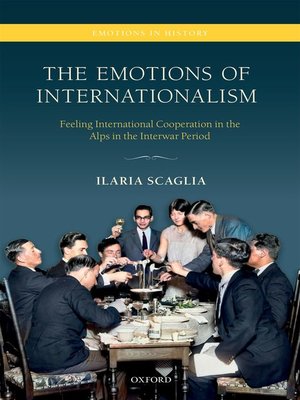The Emotions of Internationalism
ebook ∣ Feeling International Cooperation in the Alps in the Interwar Period · Emotions In History
By Ilaria Scaglia

Sign up to save your library
With an OverDrive account, you can save your favorite libraries for at-a-glance information about availability. Find out more about OverDrive accounts.
Find this title in Libby, the library reading app by OverDrive.



Search for a digital library with this title
Title found at these libraries:
| Library Name | Distance |
|---|---|
| Loading... |
The Emotions of Internationalism follows a number of international people and institutions active in the Alps in the 1920s and 1930s, exploring how they understood emotions and how they tried to employ them to achieve their political and non-political goals. Through the analysis of a broad spectrum of unpublished archival materials in four languages (English, French, Italian, and German), this study takes readers on an evocative, historical journey through the Alps. A wide range of characters populate its pages, from Heidi and the protagonists of novels and films set on the mountains, to Woodrow Wilson and other high-level political figures active both inside and outside of the League of Nations, to the alpinists and climbers engaged in hikes and international congresses, to the many children involved in camping trips, to the countless patients of the sanatoria for the treatment of tuberculosis which for decades used to dot alpine villages and to excite the popular imagination. At the centre of the volume are people's emotions-real and imagined-from the resentment left after the First World War to the 'friendship' evoked in speeches and concretely implemented in a number of alpine settings for a variety of purposes, to the 'joy' that contemporaries saw as the key to navigating the complexities of 'modernity' and to avoiding another war. The result is a compelling overview of the institutions and people involved in international cooperation in the 1920s and 1930s, understood through the lens of the history of emotions.







